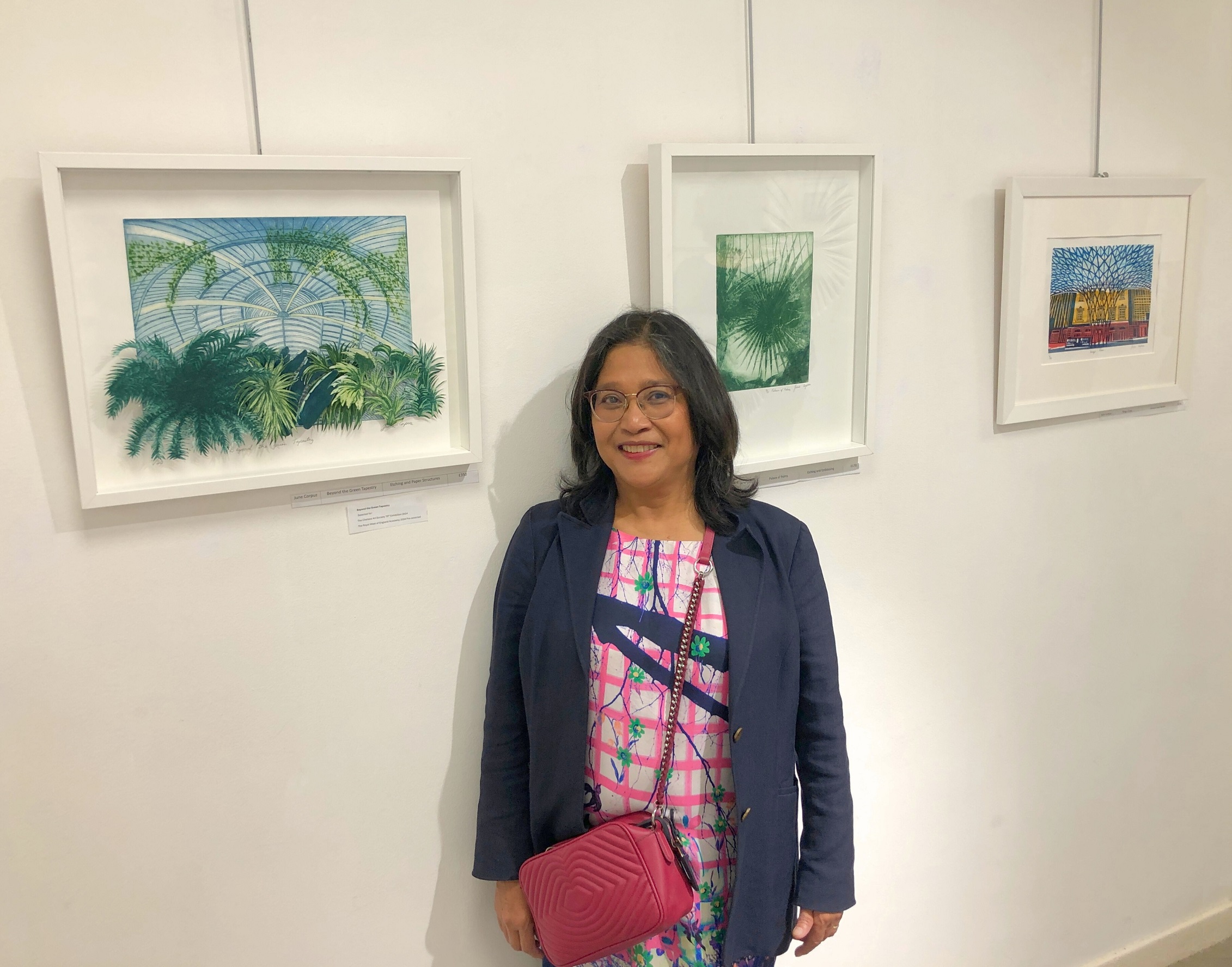Q&A with artist June Corpuz
In September, I hosted June Corpuz and Alla Rubitel at the Tavistock Centre for a collaborative show. Their exhibition Structures by Man and Nature featured over 30 artworks in a variety of mediums, including cyanotype, aquatint and Japanese woodblock print.
June Corpuz is a largely self-taught contemporary artist and printmaker. She has a particular interest in structural and architectural forms. Her focus has been in creating thought-provoking etchings and linocuts of structures and buildings around London and Europe.
I asked June a few questions about her practice.
How did you start your art journey?
I always admired art, but I never thought I could draw. About 12 years ago, I was on holiday with my cousin in Ibiza, and she invited me to her art class. I picked up a pencil and a brush, and started to draw. And I couldn’t put it down! I had to do it every single day; I had such a drive.
When I came back, I joined the Hampstead School of Art. My teacher there guided me for five years until he left London. He also taught Alla, and that’s how I got to meet her. Occasionally, we still paint with him when he comes to London. In fact, he took us out painting last Sunday. A number of pictures I have in this exhibition were made thanks to him.

What does your creative process look like?
I make a sketch, take it to the studio, and work on it there. Creating a picture takes a long time and a lot of thought. It starts as an idea, but only three to six months later does it become a drawing.
Let’s take Beyond the Green Tapestry as an example. I took that photo 10 years ago, then made a sketch of it, which I didn’t like at first. But then, one day, I decided to pick it up again to create this 3‑dimensional print. I made what I call a prototype. I drew it, cut it up, and eventually finished it in January 2023. Then, I had to translate it into a print, which took me six more months. And I only finished it because I had a buyer interested in it.
What’s next for you art-wise?
I’d like to make more folded cyanotype artworks, and make them even more intricate. Another thing I’d like to do is the Japanese woodcut.
